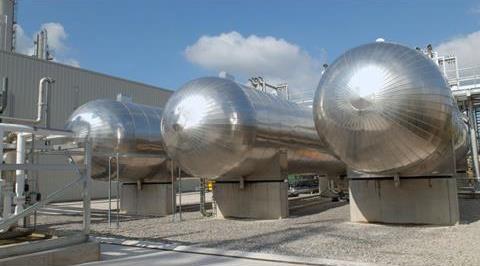The pressing need for decarbonizing the aluminium industry is loud and clear. While various techniques and alternative fuel sources are employed to reach net zero by 2050, carbon capture is one of the mature technologies that can be used. It is currently in use by other energy-intensive sectors too. The carbon capture process can be instrumental in reducing the levels of global warming.
What is Carbon Capture Storage (CCS) and Utilisation (CCU)?
CCSU, or carbon capture, storage and utilization, is a three-step process involving: capturing the carbon dioxide produced by power generation or industrial activity, transporting it; and then storing it deep underground.
In this method, emitted carbon dioxide is captured and stored in a porous rock layer or transferred via pipeline for reuse.
Where does the aluminium industry stand in the case of CCSU?
In all other industries, this process is in its mature stages. However, in the aluminium sector, CCUS is still in the conception stage with a technology maturity of 4 or 5. The industry can significantly benefit from this process and reduce its carbon footprint substantially.
Many aluminium smelters and alumina refineries use traditional fossil-fuel-based energy resources. Immediately shifting to clean hydrogen or other sustainable energy sources may only be viable for some financially, logistics-wise, etc. In such cases, CCUS gives organisations a middle ground.
Challenges of CCU & CCS in the aluminium industry:
Although carbon capture seems plausible, the prime challenge is that off-gas from aluminium smelters contain a low level of carbon dioxide, approximately 1 per cent. However, all the existing technologies for carbon capture are made for a high concentration of carbon dioxide, about 4%. Furthermore, pollutants in the off-gas are incompatible with the prevalent carbon capture technologies.
Hydro’s notable efforts in CCSU:
One of the largest aluminium companies in the world, the Norwegian company Norsk Hydro ASA is making remarkable progress in innovating the carbon capture, storage, and utilisation process. In early 2021, Hydro collaborated with Verdox, a carbon capture company, to eliminate carbon dioxide from the off-gases and the air. They have invested 20 million USD, after which Hydro will have a minority ownership.
Verdox is commercialising an all-electric carbon capture technology that can capture carbon emissions from industrial off-gas and the air. Other carbon capture solutions depend on thermal, pressure, heating, and cooling liquid substances. However, Verdox’s innovative technology is fully electric and expected to be highly energy efficient.
In the first phase of development, the technology was put to the test in Hydro’s primary aluminium smelter, and the results are optimistic. The technology will be tested and piloted in Hydro’s aluminium smelters in the upcoming phase. The goal is to reach an industrial scale by 2030.
Carbon capture in India:
Though an existing technology, CCSU is relatively new in the Indian market. Prominent Indian institutes are making breakthroughs in the CCSU domain, and the results are boosting the country’s Net Zero by 2050 agenda.
Indian Institute of Technology (IIT) Guwahati has partnered with NTPC Limited, the largest energy conglomerate in India, to design and develop a highly energy-efficient system for capturing carbon dioxide from power plants. This technology will consume up to 11% less energy than commercially activated MDEA (Monoethanolamine) solvent.
Indian Institute of Chemical Technology (IICT) Hyderabad has stimulated an in-situ carbon capture process. The carbon dioxide is converted into high-purity hydrogen from non-fuel grade bio-ethanol. The research was also published in the Elsevier journal Chemical Engineering and Processing.
It is only a matter of time before top aluminium producers in the country implement carbon capture technologies to reduce their carbon emissions effectively.


